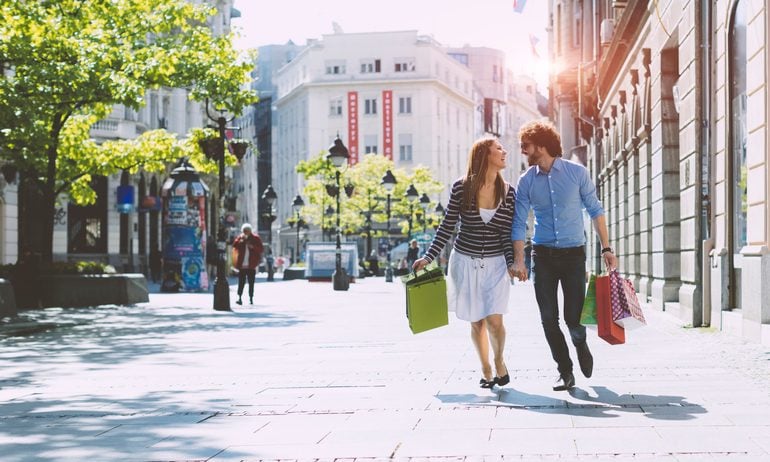Value-Added Tax (VAT): What It Is, How Refunds Work
Here's how value-added tax works, what it is and how you can get a VAT refund if you shop while traveling.

Many, or all, of the products featured on this page are from our advertising partners who compensate us when you take certain actions on our website or click to take an action on their website. However, this does not influence our evaluations. Our opinions are our own. Here is a list of our partners and here's how we make money.
If you’ve ever traveled outside the United States and done some shopping, chances are you’ve noticed a VAT, or value-added tax, on your receipts. Here’s what VAT is, how it works, and how you might be able to get your money back.
What is value-added tax (VAT)?
A value-added tax (VAT) is a tax on products or services when sellers add value to them. In some countries, VAT is also called a goods and services tax. Similar to but not exactly like a sales tax, VAT is applied throughout the process of a good's production, with consumers paying a percentage of the tax upon sale.
5.0
NerdWallet rating- Federal: $79 to $139. Free version available for simple Form 1040 returns only.
- State: $0 to $69 per state.
- Expert help or full service filing is available with an upgrade to Live packages for a fee.
How value-added tax (VAT) works
Value-added tax is typically a percentage of the sale price. For example, if you purchase a pair of shoes for $100, and the VAT rate is 20%, you would pay $20 in tax at the register when you pay for the shoes.
Value-added tax rates vary by country, and some countries exclude certain goods or services from the tax altogether. For example, the European Union requires that an EU country’s VAT rate must be at least 15%. Some things qualify for a reduced rate, which has to be at least 5%.
Although businesses may pay value-added tax on the goods and services they buy, they generally get to recoup those payments from the VAT they collect from their customers. The businesses then remit what’s left to the government.
Is there VAT in the U.S.?
There is no VAT in the United States.
Even though the United States doesn’t have a value-added tax, it does require consumers to pay federal excise taxes on the purchase of gasoline, alcohol, tobacco and other products. In addition, several states and cities collect sales taxes. Intuitively, the concepts are similar in that they are all taxes on consumption. The difference is in how the tax is collected. Over 100 countries have a VAT .
5.0
NerdWallet rating- Federal: $79 to $139. Free version available for simple Form 1040 returns only.
- State: $0 to $69 per state.
- Expert help or full service filing is available with an upgrade to Live packages for a fee.
How to get a VAT refund
If you visit a country with a VAT, you might be able to get a refund on the tax you pay when you shop there. However, there are many steps, and some travelers decide the VAT refund process isn’t worth the trouble.
Here are some of the general rules, but before you travel, be sure to check the VAT rules in the country you plan to visit.
Spending on food and hotels often isn’t eligible for VAT refunds.
Typically, you pay the value-added tax at the time of purchase and then apply for a refund from the shop.
Usually, your purchase must be over a certain amount in order to qualify for a VAT refund. In the EU, for example, you have to buy at least 175 euros worth of stuff in a shop. The threshold isn’t cumulative, though, meaning that spending 100 euros in one shop and 100 euros in another shop doesn’t meet the minimum. It may be worth it to consolidate your shopping if you’re angling for a VAT refund.
Some shops don’t offer VAT refunds. Some shops process the refund directly, and some shops use third parties to process the refund. Ask for written instructions about how to claim your VAT refund.
You usually have to be a visitor to get a VAT refund. The address on your passport matters here. You might qualify as a visitor if you’re living in the country temporarily but have a permanent home somewhere else.
You’ll likely need to show the store clerk proof that you live outside the country, and you’ll have to fill out a form.
Sometimes the shop charges a fee for VAT refunds, so be sure to ask about that ahead of time.
Usually, you’ll need to mail your stamped VAT refund form to an address the shop provides. But you don’t always have to wait to get back home. Some big airports, ports and train stations have VAT refund offices where you can get your refund right away — if the retailer you shopped at uses that office.
When you go home with your stuff, a customs officer has to stamp your refund paperwork as proof of export. Without the stamp, you won’t get your VAT refund.

